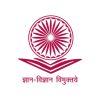NIRF 2025: Breaking the Benchmarking Blind Spot in Indian Higher Education
– Dr Sanjeet Singh, Pro Vice-Chancellor, Marwadi University
For decades, India’s 1,005 universities — some with a legacy spanning over 150 years — have operated without credible yardsticks to measure quality, research output, or global competitiveness. The absence of a robust domestic ranking framework meant institutions had little incentive to benchmark themselves against international standards.
That changed in 2015 with the launch of the National Institutional Ranking Framework (NIRF). A decade later, in its 10th edition published on 4 September 2025, NIRF has emerged as a transformative catalyst, propelling Indian higher education institutions towards global excellence and international competitiveness.
The transformation has been remarkable. In 2025, NIRF attracted 14,163 applications from 7,692 distinct institutions, a resounding testimony to its credibility and nationwide acceptance. Even more significant is the fact that 54 Indian universities now feature in the QS World University Rankings 2026, up from 46 in 2025. This upward trajectory is a direct outcome of NIRF compelling institutions to benchmark themselves against rigorous parameters: Teaching, Learning & Resources (TLR), Research & Professional Practice (RP), Graduation Outcomes (GO), Outreach & Inclusivity (OI), and Perception.
The Perception Premium: Perhaps NIRF’s most innovative contribution is its emphasis on perception — a metric that rewards sustained visibility, reputation, international collaborations, media dissemination, and alumni outcomes. Higher NIRF ranks enhance global visibility, attracting international students, faculty, research funding, and collaborations.
Improved resources and talent pools, in turn, boost research output and teaching quality — which further elevate both NIRF and global rankings. This virtuous cycle is precisely the competitive ecosystem Indian higher education needed to break into the global arena.
Research Intensity: The Great Equaliser: NIRF’s Research & Professional Practice parameter has been genuinely transformative. Top institutions now demonstrate that Indian research is increasingly competitive on the international stage. The framework’s emphasis on research has incentivised universities to pursue high-impact publications in reputed international journals, moving beyond the insularity that previously characterised Indian academia.
The ripple effects extend beyond elite institutions. With 7,692 distinct institutions participating, even mid-tier and regional colleges recognise that improvements in research output can significantly enhance their rankings. This democratisation of competition, where every institution has a clear pathway to improvement and recognition, represents NIRF’s most significant achievement in levelling the playing field.
Inclusivity: Beyond Infrastructure: NIRF’s Outreach & Inclusivity metric has encouraged institutions to embrace a holistic vision of excellence. Gender balance, regional representation, and access for disadvantaged groups now carry meaningful weight in rankings. This progressive approach aligns Indian universities with global frameworks that value equal opportunity alongside academic excellence, transforming them from exclusive enclaves into engines of social mobility and national development.
The Path to Global Leadership: The progress achieved warrants both celebration and continued commitment. While Indian institutions are making strides in attracting international students and faculty, there remains substantial room for growth. NIRF’s success in fostering accountability demonstrates what’s possible when institutions embrace transparency and healthy competition.
In merely a decade, NIRF has achieved what once seemed improbable — creating a culture of accountability and constructive competition in Indian higher education. Before NIRF, universities lacked reliable benchmarks for measuring performance. Today, every institution knows precisely where it stands and has a clear roadmap for advancement.
The Road Ahead: The evidence that NIRF has elevated Indian higher education is compelling. The challenge now is to sustain and accelerate this momentum. With the National Education Policy (NEP) 2020 providing a forward-looking vision, continued focus on transparent metrics and light-touch regulation will enable institutions to compete freely and excel.
NIRF has convincingly demonstrated that when Indian institutions are held to rigorous standards and public accountability, they rise to the challenge admirably. The framework’s emphasis on perception, research intensity, graduation outcomes, and inclusivity has created a blueprint for global competitiveness.
With continued investment in research, infrastructure, faculty quality, and international collaborations, India’s higher education sector is well positioned to compete with the world’s finest institutions.
The transformation of Indian higher education is well underway. NIRF 2025 confirms that India is on an encouraging trajectory — evolving from a system that once operated in isolation to one increasingly confident on the international stage. India’s demographic advantage, with the world’s largest youth population, combined with NIRF’s rigorous benchmarking, positions the nation to emerge as a global higher education hub.
That’s progress worth celebrating — and building upon with renewed vigour and strategic vision.
Also Read: DU colleges dominate NIRF rankings; TN holds largest share of institutions ranked
















Add comment